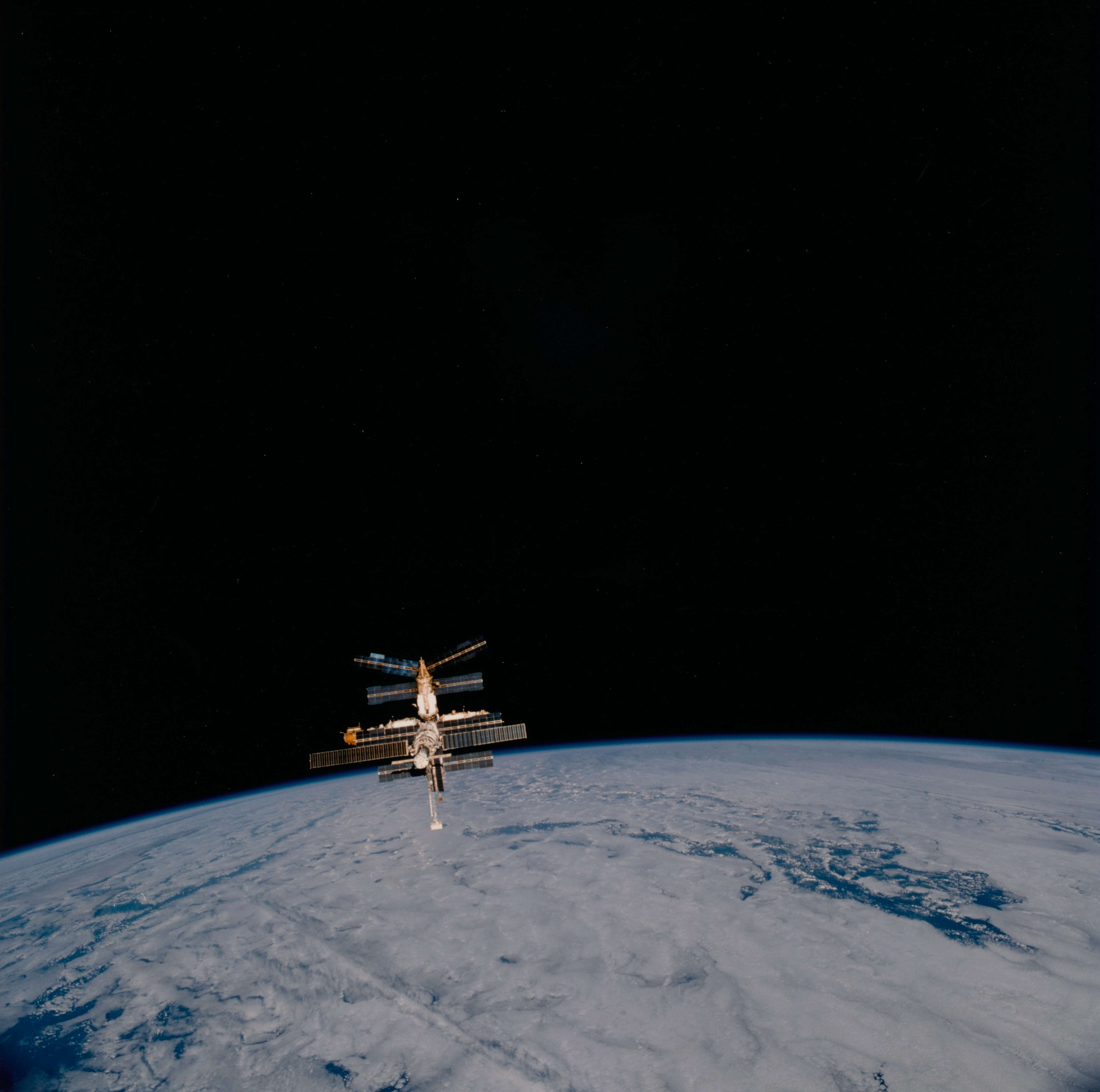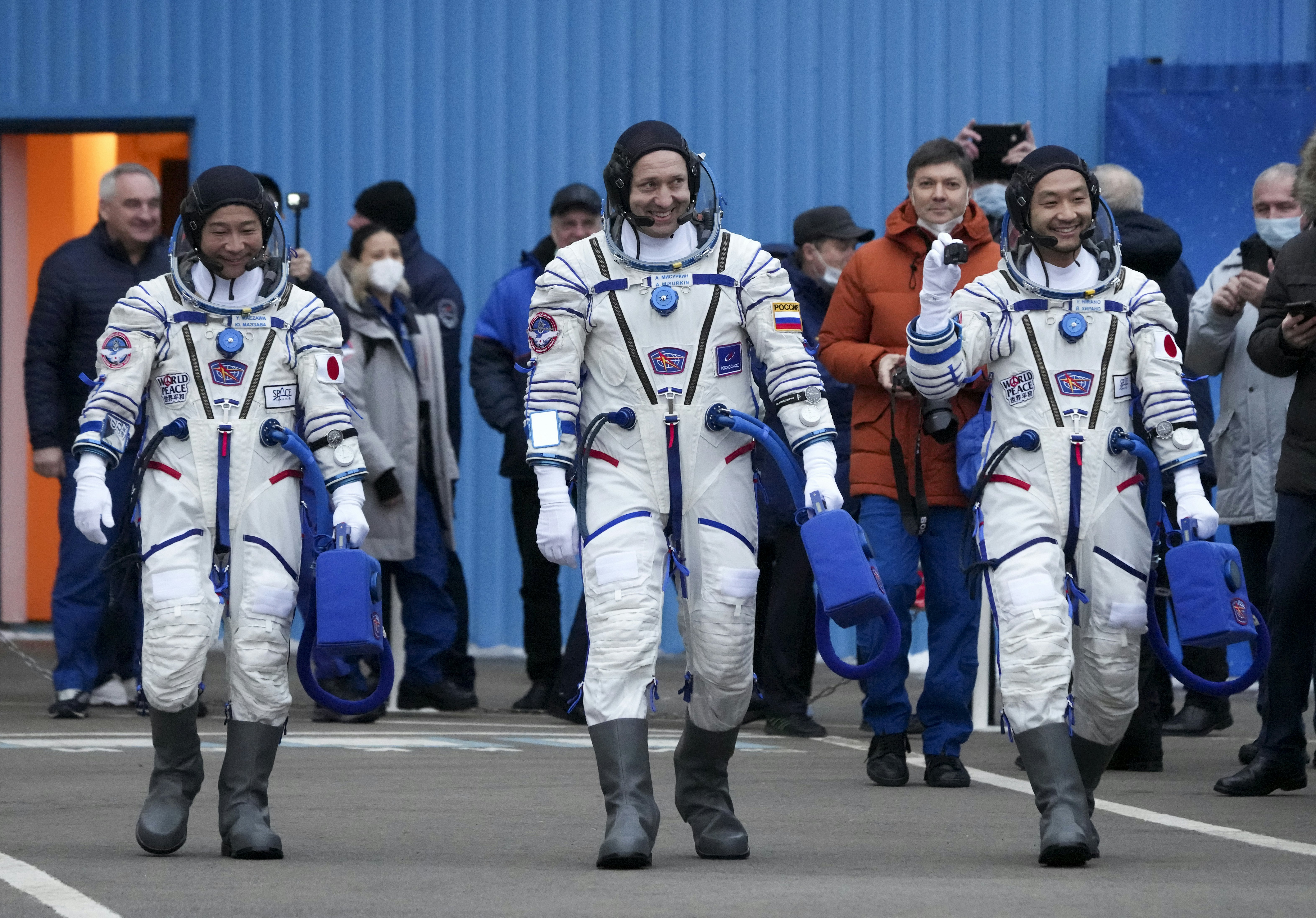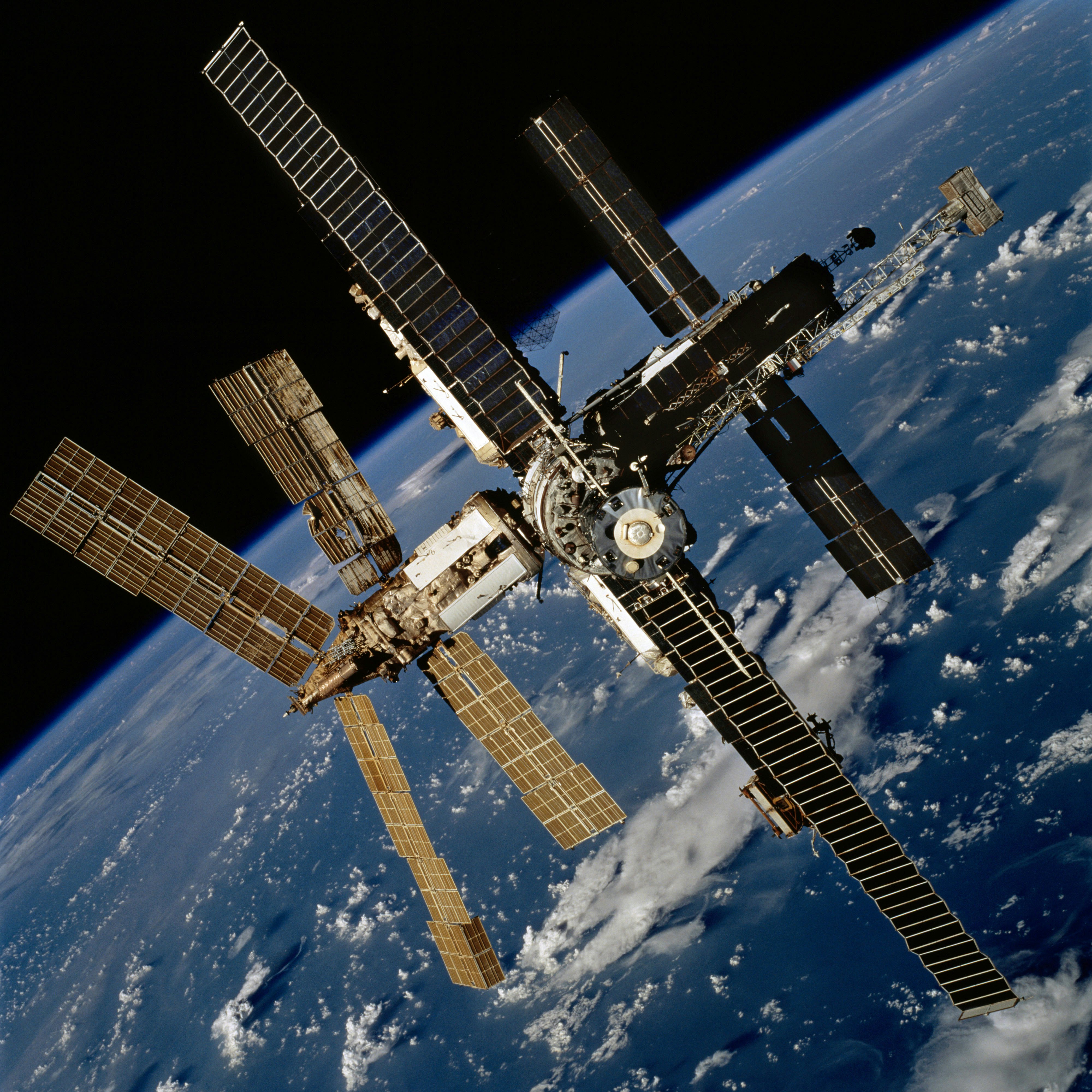
On Monday, Russia’s space agency Roscosmos gave the world its best look yet at its new space digs — the Russian Orbital Service Station (ROSS).
RSC Energia, the arm of Roscosmos tasked with building the station’s modules, displayed a pint-sized model of the completed station at an exhibition for Russia’s military industry in Moscow. Adorned with a variety of solar panels, the space station resembles a sci-fi space wheel and is equipped with various modules — including one dedicated to tourism — that flare out in four directions from a central hub. Russia’s new reusable spacecraft, the Oryol, is also seen docked at the station.
This reveal arrives amid the rapidly unfolding space breakup between the U.S. and Russia, a (mostly) friendly relationship that’s lasted nearly 28 years. In a particularly dramatic move, Roscosmos’ new director-general Yuri Borisov announced on July 26 that the country will withdraw from the International Space Station program at the end of 2024 (though the agency later reiterated that it wished to stay on longer).
While it’s just one of many ISS partners, including Europe, Japan, and Canada, Russia helps ferry astronauts to and from the station and operates one of ISS’s two main sections. In other words, Roscosmos’ impending withdrawal from the ISS — not to mention its country’s ongoing war in neighboring Ukraine — places a giant question mark not only on the future of the ISS, but also the future of international cooperation in space.

What Is ROSS?
ROSS isn’t some new fling — Roscosmos has flirted with the idea of a new, all-Russian space station for a while. Though it was officially announced back in April 2021, evidence suggests that the agency has mulled over space station ambitions since at least 2015. At the time of the announcement in April, Dmitry Rogozin (the then-head of Roscosmos) posted a video on the popular messaging app Telegram in which he claimed that “the first core module of the new Russian orbital station is in the works.”
Its current design includes room for up to seven separate modules, including core, science, and gateway modules, as well as a service platform that will host up to four cosmonauts at a time (along with scientific equipment). The ISS, by comparison, composes 16 modules and can host seven astronauts at a time, so ROSS will at the very least be smaller than its football field-sized predecessor.
But unlike the ISS, ROSS won’t have permanent residents year-round. Instead, it will only host cosmonauts “twice a year for extended periods,” according to Reuters.

What Will ROSS do?
ROSS is still years out and shrouded in secrecy, so it’s hard to predict exactly how the new space station could surpass the ISS’s capabilities.
Roscosmos officials have told Russian state media that the station will likely orbit at higher latitudes than the ISS does. This could offer a better view of the Earth’s polar regions, which Russian researchers could analyze with optical, infrared, ultraviolet instruments. After all, Russia’s borders cover 53 percent of the Arctic Ocean’s entire coastline, and the country likely wants to use ROSS to chart northern sea routes as climate change melts Arctic sea ice.
Vladimir Solovyov, flight director of the Russian part of the ISS and a general designer at RSC Energia, said that ROSS will be used for cosmic rays experiments, testing new space technologies, and researching space materials and nanotechnologies. He even mentioned the possibility of robots that can study auroras, according to Space.com. More fanciful ideas include dedicating one of the station’s modules to space tourism, an idea that was originally considered for the ISS.
In the far future, ROSS could fulfill even more ambitious goals — one hopeful, and one sinister. First off, Solovyov suggests the platform could be a launchpad for future missions to the moon, or even Mars — an idea similarly proposed by NASA with its Gateway program.
Former Roscosmos director and all-around Russian hardliner Rogozin has also stated that ROSS could serve a military role, if necessary. What that “role” could be is anyone’s guess, but “satellite-destroying weapons” probably isn’t too far off.

When will it launch?
Space stations take a lot of time to build, launch, and operate. For example, Ronald Reagan proposed the Space Station Freedom (perhaps the most ludicrously American space station name ever conceived) in 1984, which eventually morphed into the ISS and wasn’t actually completed until 2011. But it took 14 years to launch the Russian-built Zarya Control Module, the first piece of the reimagined ISS program.
Roscosmos’s timeline for ROSS appears much rosier — albeit a bit unrealistic. The plan is to launch the station in two phases, all with the help of the Oryol, a new supply ship and transport vehicle. The first phase would build a fully operational, four-module station. The core of the station, or the NEM-1 module, was originally designed as a research and energy module for the ISS. Over time, the NEM-1 underwent a retrofit and was transformed into the heart of Russia’s new space station.
During a second phase, Russian will deliver another two modules, along with a service platform. While Russian state media claims the first phase will kick off in 2025 with a follow-up crew launch in 2026, other Roscosmos sources have stated 2028 or even 2030 as possible deadlines. The second phase could possibly even extend to 2035.
Overall, Russia’s space agency isn’t exactly considered reliable, and it’s often plagued by delays even in the best of times. Some experts think it would take a miracle to even launch ROSS off the ground in the first place. And it’s impossible to know how the ongoing war in Ukraine and the resulting sanctions — some of which even reached the former head of Roscosmos himself — will affect ROSS’s ambitious timeline.
Meanwhile, China made major strides on its Tiangong space station in 2021, and NASA’s Artemis Moon program will lift off in mere weeks. Amid all of this cosmic competition, it’s unlikely Russia will be happy with a bronze medal in what’s shaping up to be a 21st-century Space Race.
Editor's note: On August 16, 2022 this post was updated to correct two grammatical errors.







